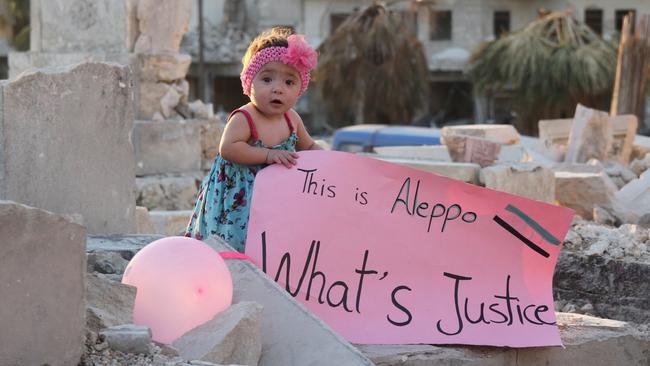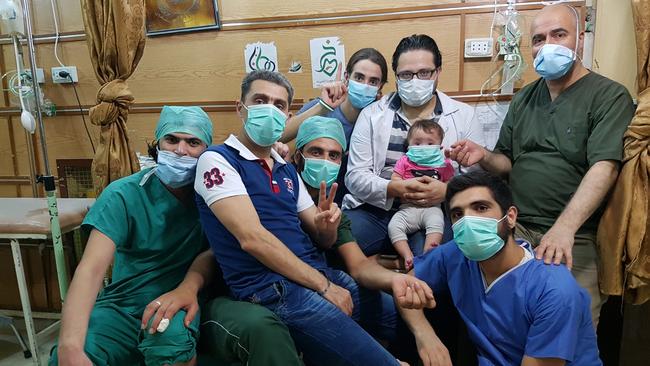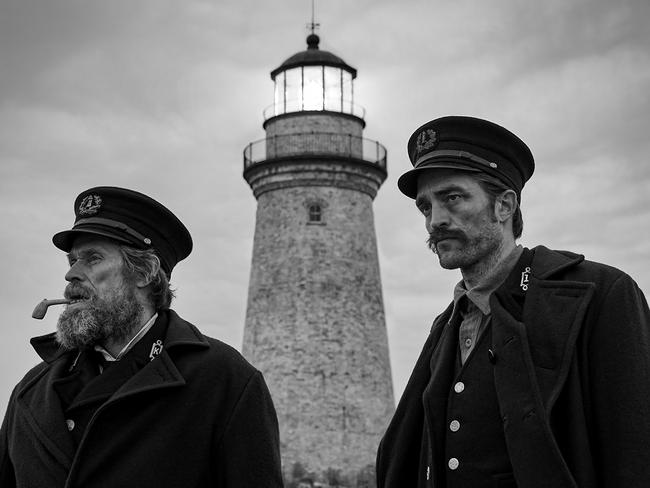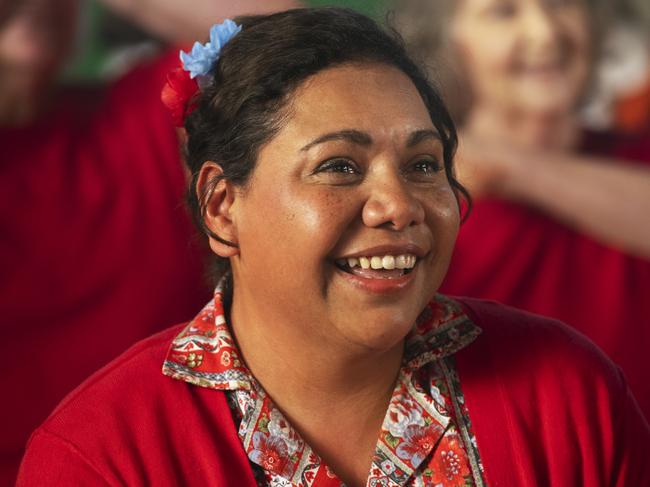Film reviews: For Sama, The Lighthouse, H is for Happiness
There’s one comforting thing about seeing this very discomforting film.

I have rarely seen a documentary film as powerful as For Sama. The viewer is transported into the Syrian city of Aleppo to experience the very nasty civil war at first hand and to meet the men, women and children who suffered the brutal siege of their neighbourhood by forces of dictator Bashar al-Assad and his Russian allies. Structured, presumably in post-production, as a letter to filmmaker Waad al-Kateab’s baby daughter, Sama, born in the middle of the siege, it is uncompromising in its graphic depiction of what life was like under constant bombardment and with dwindling supplies of food, water, fuel and medicine.
Waad, who narrates the film, was a naïve 18-year-old when she overcame the objections of her parents and went to study for a business degree at the University of Aleppo. When, in 2011 in the wake of the Arab Spring, demonstrations against the regime began among students, Waad obtained a video camera and started filming — in the widescreen Scope ratio — what was happening around her. She also met, and fell in love with, Hamza, a young doctor. Over the next five years Waad continued to film, usually under the most dangerous circumstances. We watch, with growing horror, as the apartment buildings in the part of the city where Waad and Hamza live are gradually destroyed and the hospitals where Hamza works are also targeted by the regime’s forces and by the Russian planes we see ominously overhead.

There are, to be sure, moments of peace in this horror. The wedding of Waad and Hamza is one such moment, as is the short-lived period in which they move into a house and tend a modest garden. But such pleasures are short-lived as bombs and shells and bullets shatter the neighbourhood and as the wounded and dying are treated at the district’s remaining, makeshift hospital.
Among many unforgettable scenes is one where two little boys, who have brought their injured brother to the hospital, realise the child has actually been killed; another comes when an injured woman gives birth by caesarean to a baby boy and it seems as though the infant is still-born. The moment when, after sterling efforts from the medical staff, the baby opens it eyes and starts to cry, is simply unforgettable.
It goes without saying that this form of cinema-on-the-run will not always look visually appealing. Scenes in which Waad, still filming, races towards shelter represent handheld camerawork at its most basic. But this is not the work of some hack director: it is the real deal, and places the viewer in the middle of the conflict. Against the odds, some images are strangely beautiful; Waad seems to have acquired a drone at one point that allows her to film the ruined city as the camera slowly rises above the wrecked and shattered buildings.
There’s one comforting thing about seeing this very discomforting film, and that’s that it’s clear Waad will survive. She was able to transport all the material she filmed to London where she edited and narrated the final result in collaboration with experienced documentary maker Edward Watts, who is credited as co-director. During the post-production process her narration questions her own motives for staying in the war zone with an infant child, but she is clearly deeply devoted to both the city and community of Aleppo and to the cause for which those around her fought so tenaciously. Muslim extremists are mentioned only briefly, described as yet more enemies of the “ordinary” citizens of this once thriving city.
As for baby Sama, she is seen on many occasions remarkably tranquil during the noise and shuddering of explosions. It’s sad to reflect the poor child knew no other life; we can only hope that now she has found peace and can, with her parents, look forward to a brighter future.
For Sama (MA 15+)
Limited release
★★★★½
-
LITTLE LIGHT IN MENACING TALE
In his first feature film, The Witch (2015), director Robert Eggers created a marvellously creepy atmosphere with minimal resources. He attempts to repeat this success with his sophomore film, The Lighthouse, a small-scale drama, photographed in black and white and presented in the old 3x4 screen ratio, involving two lighthouse keepers (or “wickies”) who become trapped in a claustrophobic environment.
The setting is the coast of Maine in the 1890s. Thomas Wake (Willem Dafoe), a veteran wickie, is an alcoholic control freak. Ephraim Winslow (Robert Pattinson), his inexperienced companion, is hiding some dark secret from his past. Winslow is supposed to work for a month-long shift, but bad weather — and bad luck — set in, and nothing good comes from the men’s virtual imprisonment in such a confined place.

Perhaps the bad luck stems from Winslow’s killing of a seagull; Wake warns him about killing a sea bird, and perhaps the younger man’s action is the cause of the nightmarish events that unfold — Eggers evokes Samuel Taylor Coleridge’s 1798 poem, The Rime of the Ancient Mariner.
Eggers, who wrote the film’s original screenplay in partnership with his brother, Max, drew on journals of 19th-century seafarers and the books of Herman Melville for his material. The language feels authentic, and is beautifully delivered by the actors.
Pattinson and Dafoe are both extremely fine in these roles, and the film is visually impressive as the camera prowls through the confines of the lighthouse. But this is not an easy film to embrace. The atmosphere is ugly, claustrophobic, hermetic, the images murky and relentless. There seems no doubt Eggers is an original and talented filmmaker, but he hasn’t made it easy on the audience with this grim, forbidding movie.
The Lighthouse (MA15+)
Limited release
★★★
-
SURPRISING PLEASURE
The title doesn’t sound promising, but this adaptation of a popular Young Adult book by English-born Australian-based author Barry Jonsberg proves to be surprisingly pleasurable. Set, and handsomely filmed, in Albany, West Australia, H is for Happiness is the story of Candice Phee (newcomer Daisy Axon), a literal-minded, redheaded, freckled 12-year-old who is distressed because, since the death of her younger sister, her parents have been going through a rough patch.
Claire (Emma Booth), her mother, spends most of her time in bed, grieving. Jim (Richard Roxburgh), her dad, is angry because his brother, “Rich Uncle Brian” (Joel Jackson) as Candice calls him, swindled him out of his invention and made a fortune. Candice would just like her family to be happy again.

At school, assigned a project titled “My Life as an Alphabet” by boss-eyed teacher Miss Bamford (Miriam Margolyes, very funny), Candice — ignored or bullied by the other kids — befriends new boy “Douglas Benson from another Dimension” (Wesley Patten), so-called because of his eccentric but strangely charming notions. They become close, and Douglas gives Candice a pair of homemade inflatable boobs for her 13th birthday. It’s that kind of movie.
There are no prizes for guessing how this will all turn out, but it’s a great pleasure watching the talented Axon and Patten bring charm to characters that could easily have been annoying. There’s gold among the supporting cast too: Deborah Mailman as Douglas’s mother and George Shevtsov as an eccentric shopkeeper who is Candice’s loyal friend are great. A climactic scene in which Candice and Douglas dress as Dolly Parton and Kenny Rogers to sing “Islands in the Stream” at the school concert is tremendous fun.
So what could have been trite and mawkish turns out to be really rather engaging.
H is for Happiness (PG)
Limited release


To join the conversation, please log in. Don't have an account? Register
Join the conversation, you are commenting as Logout